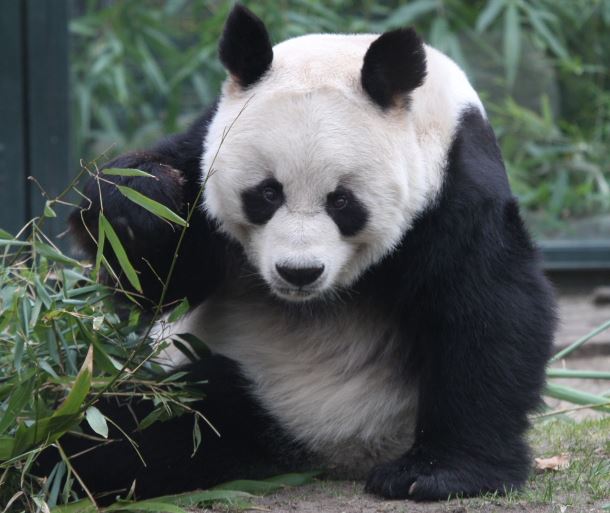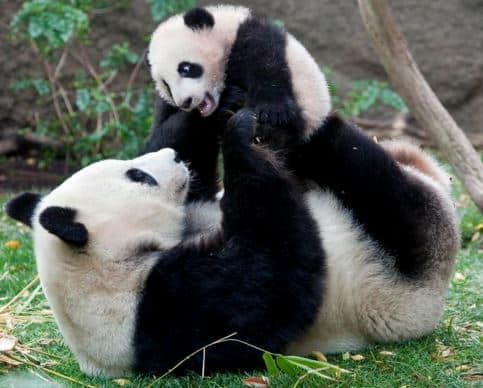Giant pandas have their own language, which they use to express physical attraction from male-to-female, flirtatious responses, unhappiness, contentment and hunger, says a group of scientists at the China Giant Panda Protection and Research Center (CCRCGP), Sichuan province, China.
When a male panda wants to attract the attention of a female he is trying to court, he utters a seductive ‘Baa’ sound, like a sheep. If she wants to tease him, she may respond with a flirtatious bird-like ‘Chirp’.
Panda cubs go ‘Gee-Gee’ when hungry, ‘Coo-Coo’ when happy, and ‘Wow-Wow’ when upset. ‘Coo-Coo’ sometimes also means ‘nice’.
 Giant pandas live in a few mountain ranges in Chinese provinces Sichuan, Gansu and Shaanxi. (Image: China Giant Panda Protection and Research Center)
Giant pandas live in a few mountain ranges in Chinese provinces Sichuan, Gansu and Shaanxi. (Image: China Giant Panda Protection and Research Center)
The scientists said they managed to decipher thirteen different panda-speak vocalizations while observing the animals nursing, fighting, mating, eating, and in some other situations.
Language learnt from mothers
Panda cubs learn new words from their mothers, and broaden their uttered sounds as they grow to chirps, bleats, squeaks, roars and barks.
Giant pandas are not social animals. The only ones that cubs learn from are their mothers.
Xingua quoted Zhang Hemin, head of the CCRCGP, who said:
“If a panda mother keeps tweeting like a bird, she may be anxious about her babies. She barks loudly when a stranger comes near. Trust me, our researchers were so confused when we began the project that they wondered if they were studying a panda, a bird, a dog, or a sheep.”
Zhang Hemin brought in experts from Vienna, Austria, in 2010 to help him translate panda utterances.
The researchers believe their work – deciphering panda-speak – may help in the conservation of giant pandas (Ailuropoda melanoleuca), especially in their natural habitat.
According to Xinhua, they would like to develop a voice-recognition program that could translate what pandas say to each other, i.e. a ‘panda-translator’.
 Panda cubs pick up language from their mothers.
Panda cubs pick up language from their mothers.
Giant panda conservation
The giant panda is still an endangered species, despite recent reports that populations are rising. There are today fewer than 2,000 living in the wild.
Their survival is under threat due to continued habitat loss, habitat fragmentation, and an extremely low birth rate (in the wild and captivity).
The giant panda’s habitat today has been confined to a small portion on the western edge of its historical range, which stretched from northern Vietnam, northern Myanmar, to southern and eastern China.
More than half of all pandas in captivity today are in the center which carried out this latest study.
Video – The challenge of panda conservation
Giant pandas present a conservation challenge like no other animal. This video shows how the bears eke out an existence in the wild, and why they’re proving so hard to save.
